The year is 1998: revisiting the originals of PS1 remakes
When I was a kid I inherited a PlayStation 1 console from my uncle. It came with a few dozen games in beat up disk cases - I don’t think I asked for more games - maybe because I had enough, or maybe because I didn’t think of it.
To relive the nostalgia, last month I picked up a portable retro console - Anbernic RG35XX Pro. Three game series caught my attention when catching up on my childhood favorites: Spyro, Crash Bandicoot, and Resident Evil. All three have received great remakes over the past decade, all three of which I’ve played. Childhood memories for the price of a single AAA game? Sign me up!
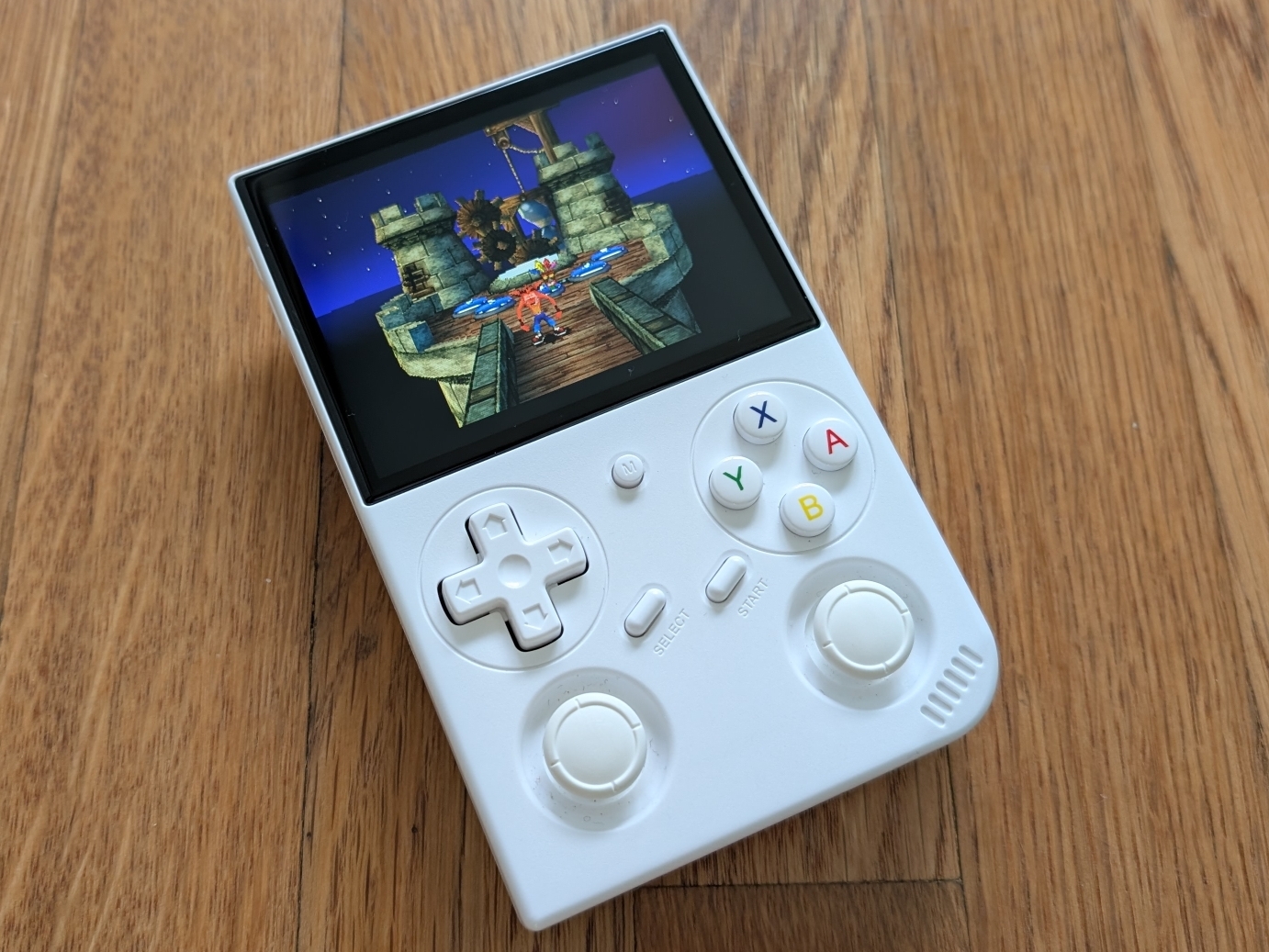 Anbernic RG35XX Pro: my handheld way to reexperience the games from my childhood, in glorious 640x480 resolution.
Anbernic RG35XX Pro: my handheld way to reexperience the games from my childhood, in glorious 640x480 resolution.
So here’s how I felt booting up the originals on a PS1 emulator.
Crash Bandicoot 3: Warped
I inherited a beat-up copy of Crash Bandicoot 3: Warped (1998), and played through it many times over. I remember playing Crash Bandicoot even before I inherited the console, back at my uncle’s house - I was too little to figure out how things work, and the first level was enough to keep me entertained for hours. There were these frog enemies I was terrified of, and I’d run to get my older cousins to get rid of those for me.
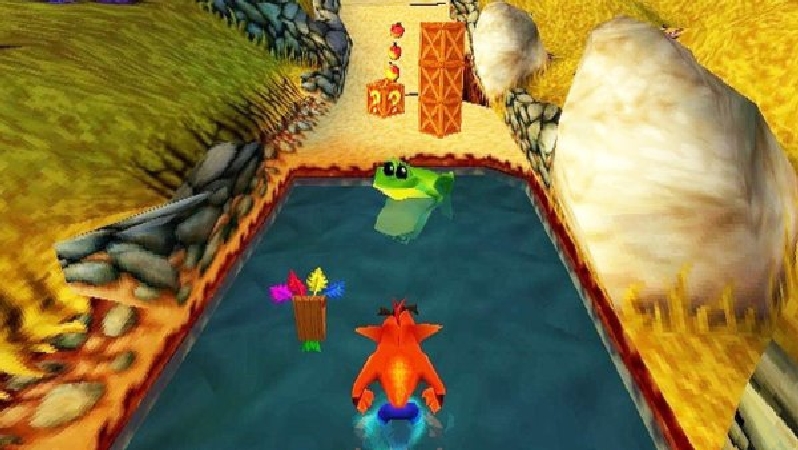 Crash Bandicoot 3: Warped (1998): These frogs were my sworn enemies. Hated them with a passion.
Crash Bandicoot 3: Warped (1998): These frogs were my sworn enemies. Hated them with a passion.
Eventually, once I got a little older, I beat the game - it was one of the first games I finished all the way through. Neo Cortex is one of the first final bosses I’ve ever encountered in gaming, and the game holds a special place in my heart.
Crash Bandicoot N. Sane Trilogy remake came out in 2017 and was the first remake from my childhood I had the pleasure to play. Everything was just as I remember, which is what in my opinion makes the best remake. I didn’t remember the PS1-era graphics, the crunchy audio, the slow loading screens, or the sometimes clunky controls. Oh, the charm.
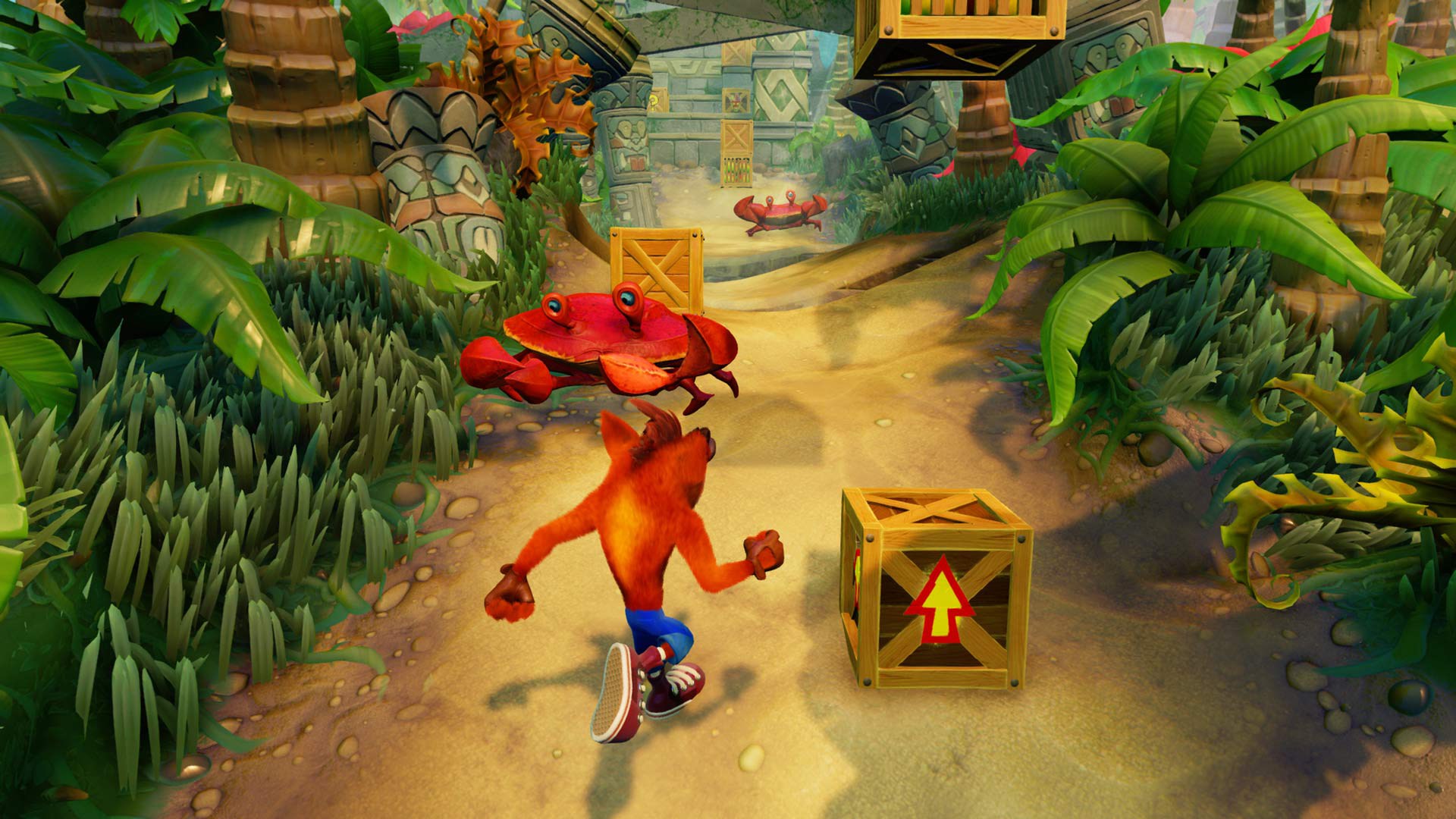 Crash Bandicoot N. Sane Trilogy (2018) upgraded the graphics, sound, and controls, but left the fixed camera perspective. For the best, as it’d be a completely different game otherwise.
Crash Bandicoot N. Sane Trilogy (2018) upgraded the graphics, sound, and controls, but left the fixed camera perspective. For the best, as it’d be a completely different game otherwise.
Booting up the original Crash Bandicoot 3: Warped on my handheld console in 2025 left me with the same feelings of awe. The game is now 27 years old, but it looks, plays, and sounds surprisingly well. Yes, the handheld’s tiny screen definitely helps to make era-appropriate 3D graphics more palatable, but I had a blast running through the stages I remember so well.
One of the bigger decisions that helped Crash Bandicoot stand the test of time is the fact that it’s a 2.5D platformer. While the game’s in 3D, the camera perspective is fixed as you progress through the linear levels. There’s a technical limitation in play - the original PlayStation 1 didn’t have the analog sticks:
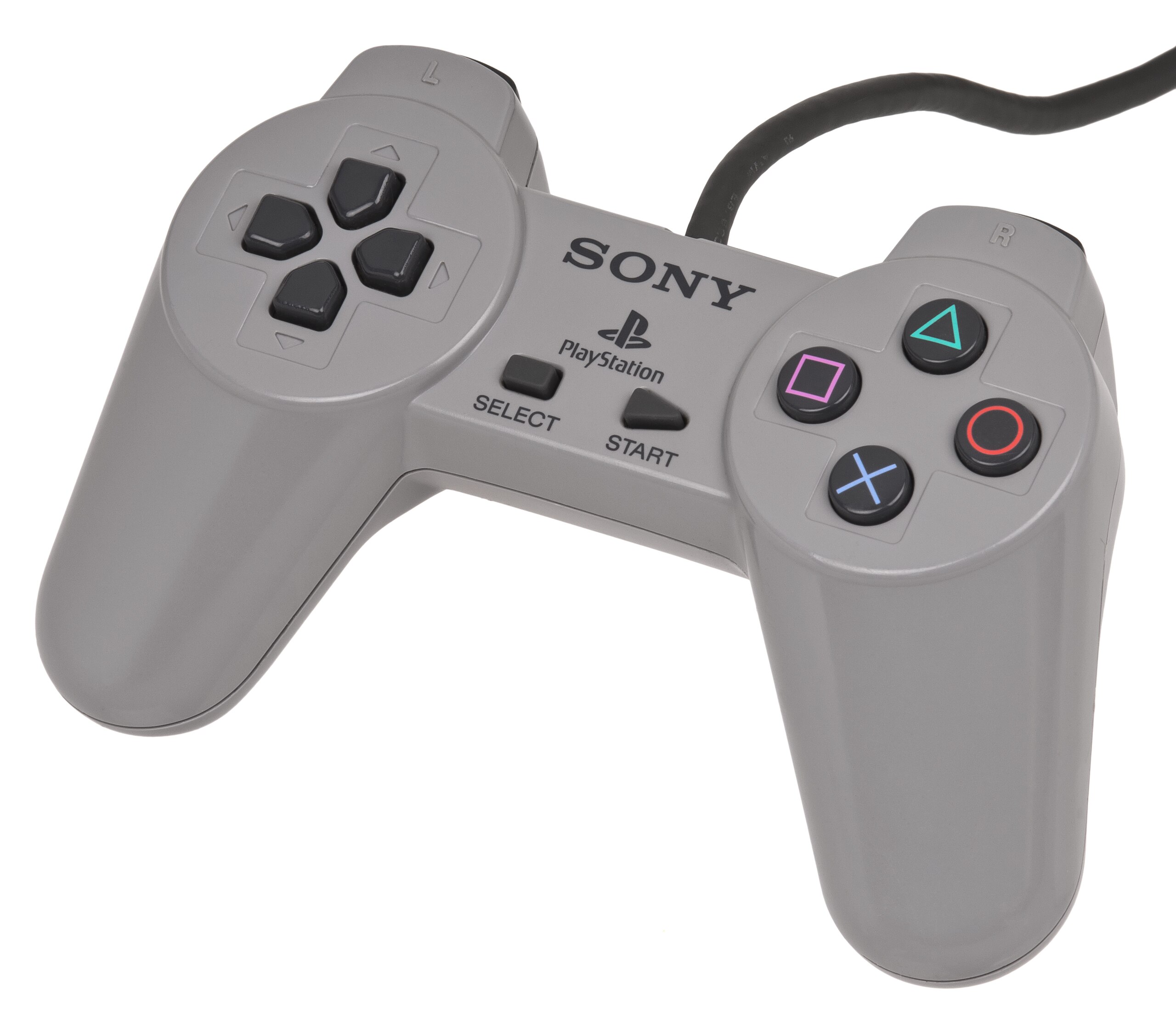 A PlayStation 1 controller. Note the absence of the analog sticks.
A PlayStation 1 controller. Note the absence of the analog sticks.
Unlike my childhood memories, I found it easy to play through the remake. I thought that’s because the remake smoothed out many of the rough edges - but playing through the original makes me think that might not be the case. Playing through the original all these years later is much easier too, and I’m sure more than 20 years of playing video games have something to do with this (I wrote about when I didn’t speak the language of games before). Yes, the error margins are smaller, the movement is clunkier, but it’s not really that hard.
Except for the racing mini-games: those still suck as bad as I remember and are incredibly hard to beat.
Spyro the Dragon and Spyro 3: Year of the Dragon
As a kid I played the first and the third installments in the series: Spyro the Dragon (1998) and Spyro 3: Year of the Dragon (2000). The world was colorful, the protagonist funny, and it was very clear what I had to do - which wasn’t often the case with the original PlayStation 1 games. Oh, and it never occurred to me that Spyro 2 might exist.
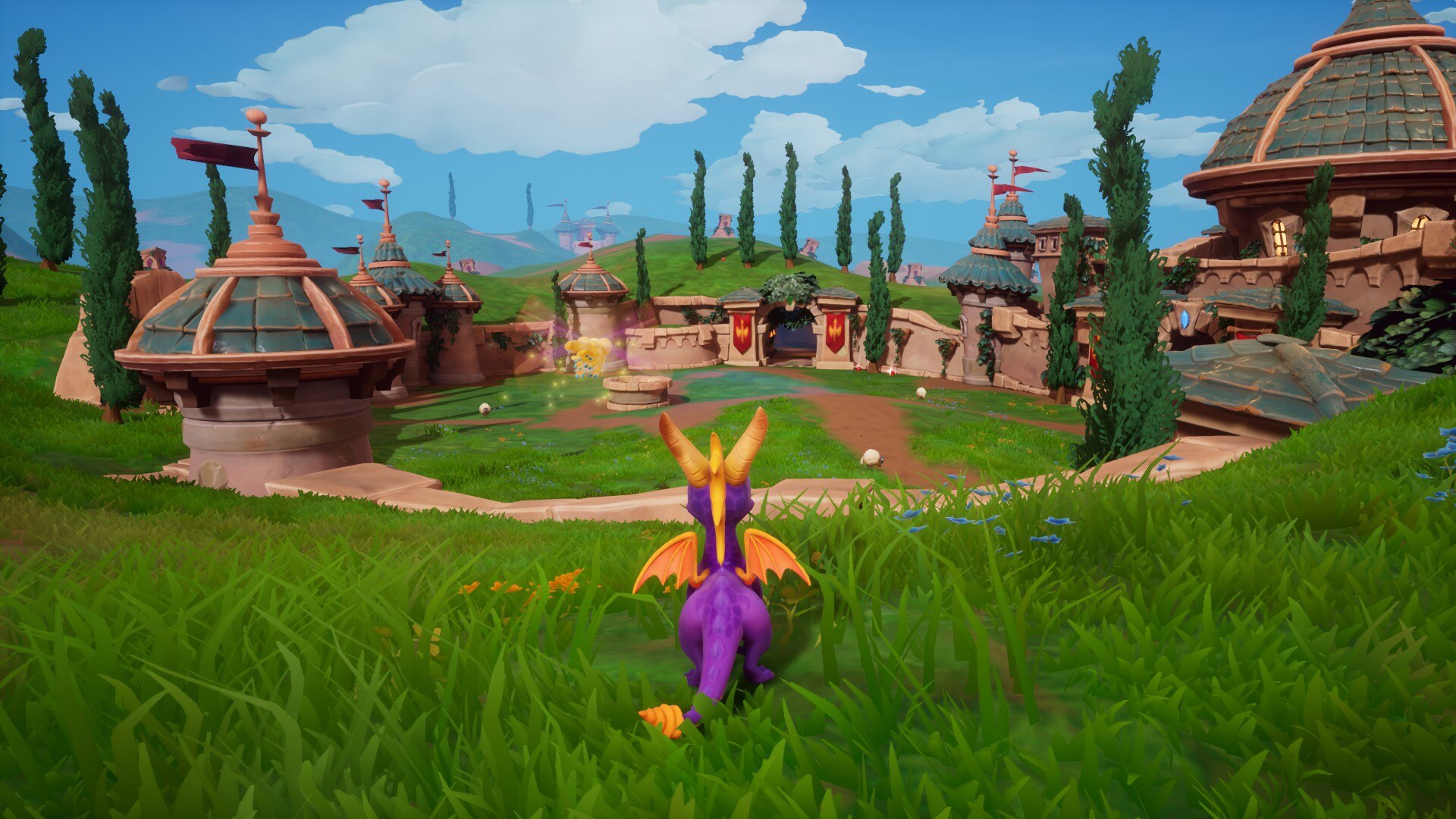 Spyro Reignited (2018) is full of color, personality, and is a joy to play.
Spyro Reignited (2018) is full of color, personality, and is a joy to play.
Spyro Reignited - the remake of the trilogy - came out in 2018, and it’s yet another remake I had an incredible time with. The world is colorful, the soundtrack is magical, and Spyro controls oh-so-smoothly.
But wait - what’s that? Playing through originals is a lot more jarring than booting up the Reignited trilogy, or even going back to the original Crash Bandicoot 3. Thanks to the tiny retro handheld screen, the graphics hold up, the soundtrack tugs at my nostalgia - then what’s the issue? The true 3D nature of the game. Remember how the PlayStation 1 gamepad only has a D-pad and no analog sticks? Yeah, this makes the camera clunky, to put it mildly.
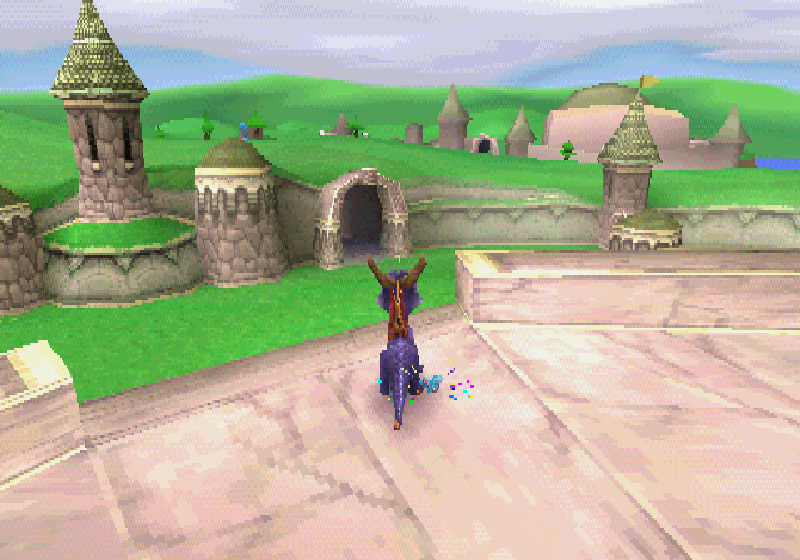 Spyro the Dragon (1998): The original is more muted in comparison, likely for better visibility at low resolution.
Spyro the Dragon (1998): The original is more muted in comparison, likely for better visibility at low resolution.
The camera starts turning as Spyro moves left, right, or backwards long enough. It’s weird, and I can’t believe we used to live like that. This makes the game significantly harder too - I’ve been spoiled with having the freedom of looking around in games for so long that going back to a control scheme without the analog sticks is punishing.
I started getting used to the controls after the first couple of levels, but the experience was certainly jarring, and reminded me of having to learn controls as a kid. We (the audience for video games) take the standardized modern control schemes for granted: left stick to move, right stick to look around. Most modern games are controlled this way, and you don’t have to relearn controls each time you pick up a new title. Not in the PS1 era though: each developer had to figure out how to make 3D work in their own game.
I’m having more empathy for little me booting up a game and falling off a cliff hundreds of times trying to make a seemingly simple jump. Yeah, gaming skill is one thing, but those controls are clunky as hell.
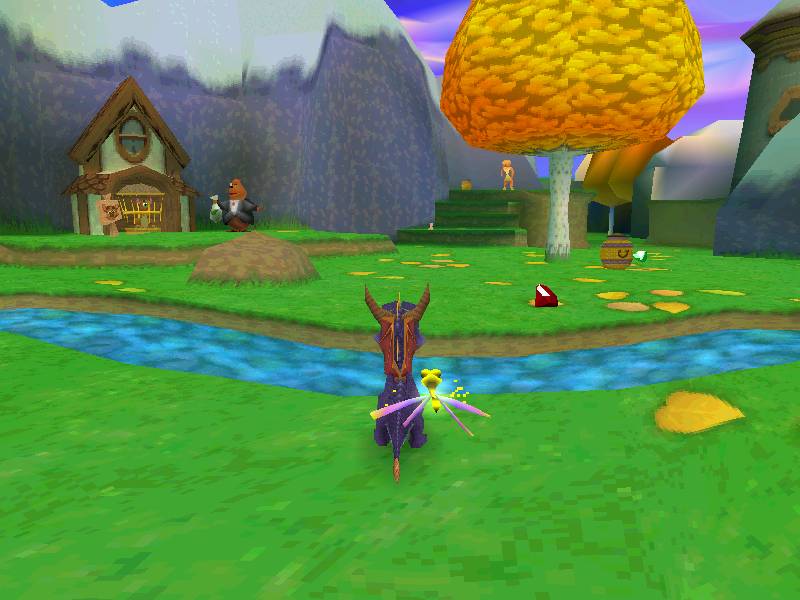 Spyro: Year of the Dragon (2000): More colorful, bigger, more responsive.
Spyro: Year of the Dragon (2000): More colorful, bigger, more responsive.
As I played through the first and third Spyro titles, the jump in graphical fidelity and responsiveness of controls stood out to me. On the same hardware, the difference is noticeable. The world looks sharper, more colorful, less blocky. By the “Year of the Dragon”, Spyro, despite the dreaded absence of the ability to freely look around, controls much better than in the first game. It’s cool watching the developers iterate and squeeze out more of the PS1 hardware.
Resident Evil 2 (1998)
I don’t know if I liked Resident Evil 2 when I was little. It was scary, difficult, and stressful. I definitely haven’t made my way past the police station, and most of my childhood memories of Resident Evil 2 are of the many, many, many visceral and disturbing death screens. Resident Evil 2 had a lot of those.
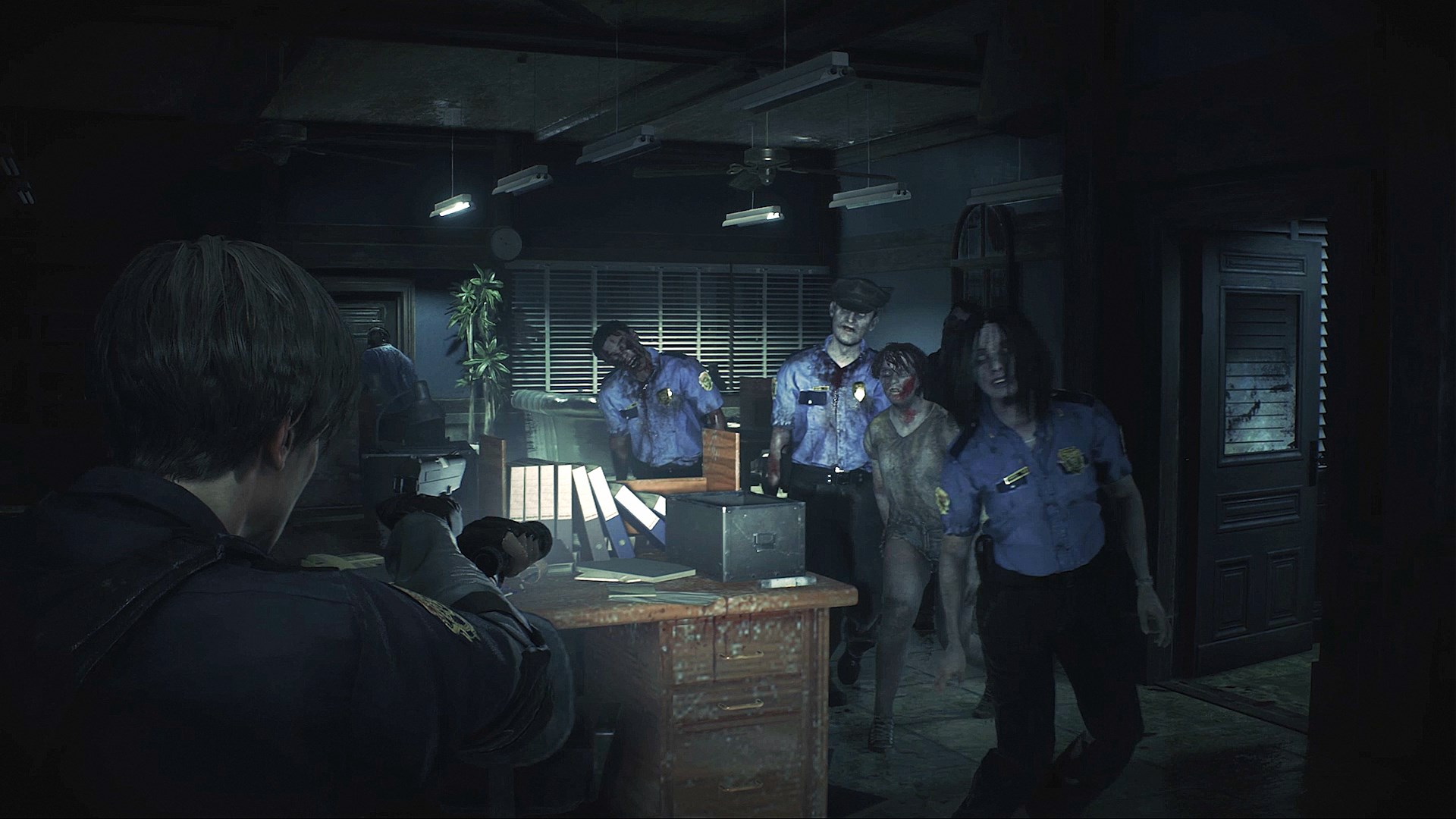 Resident Evil 2 (2018): what every remake should strive for. This is exactly how I remember the game feeling, even if the graphical fidelity and the control schemes weren’t yet there.
Resident Evil 2 (2018): what every remake should strive for. This is exactly how I remember the game feeling, even if the graphical fidelity and the control schemes weren’t yet there.
The fantastic 2018 remake of the classic actually got me to finish the game. I can’t believe there was a whole research complex under Raccoon City! (spoiler, I guess?) Move away from the fixed perspective camera, increased zombie aggression - all incredible choices to modernize the game.
The 1998 title is another great example of ingenious work around the PS1 limitations. Prerendered backgrounds hold up beautifully. Tank controls still suck, but given the PlayStation 1 controller - there are really no good options here, and the controls support the game’s oppressive atmosphere. Zombies are slow, and in a modern game wouldn’t be even mildly annoying, but clunky controls amp up the danger. Yeah, zombies are slow, but so are you. Aiming a gun is hard, running away is hard. This is no power fantasy, we’re in a survival horror game.
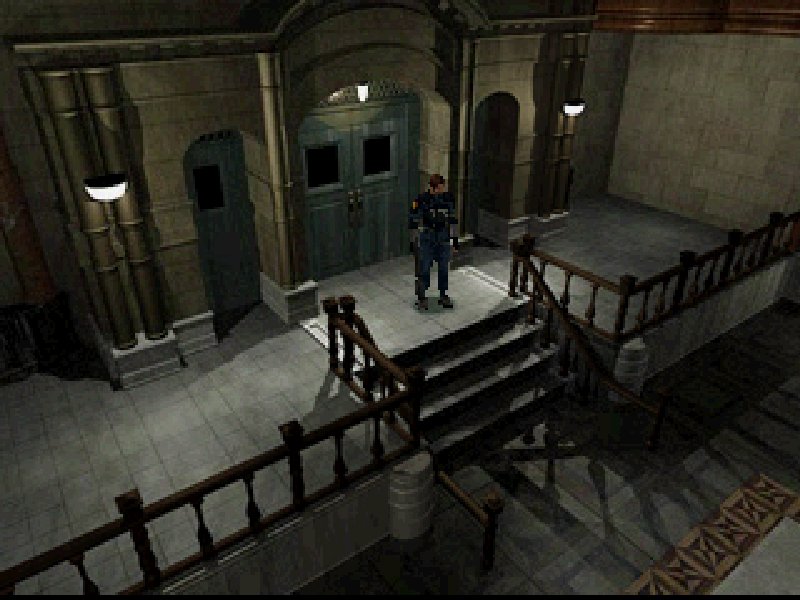 Resident Evil 2 (1998): The prerendered backgrounds hold up really well, but the tank controls feel more frustrating than oppressive.
Resident Evil 2 (1998): The prerendered backgrounds hold up really well, but the tank controls feel more frustrating than oppressive.
But booting up the game made me really thankful for the modern tutorials, or how the games tend to ease you into the game. In the original PS1 game, you hit “New Game”, and after a cutscene plays, you’re thrown into the aftermath of the car crash, surrounded by 4 zombies, with no easy escape route. You’ve got precisely 5 seconds to figure out the controls, map out the exit route, and make your way out.
Needless to say, booting up the game for the first time ends in a “game over” screen. In a way, it’s a fitting introduction to the game, and escaping the initial onslaught of zombies makes way for a slower paced, slightly more methodical game. But it’s definitely discouraging, and I’m glad the 2018 remake added a mini-tutorial at the gas station, to get the players familiar with the controls before the action picks up.
Trip down the nostalgia lane
I deeply enjoyed revisiting the games from my childhood, and contrasting them to fresher memories of remakes. While I have fuzzy warm memories about these games from over 20 years ago, the remakes are objectively a superior way to experience the titles.
In Crash Bandicoot, the remake improved on fluidity of movement, adapting the title to the modern control schemes. Spyro’s experience is significantly improved by having a dedicated camera control. In Resident Evil 2, the remake captured all the tension of the original, without having to suffer through the control schemes and limitations of the era.
The originals are still awesome, genre-defining, clunky-as-hell games. The remakes are a convenient lie: they deliver the experience we think we remember, without forcing us to engage with the frustrating limitations of the early 3D era. And now that I’m fluent in a standardized language of modern controls, I can appreciate the early attempts at making games accessible to an audience not yet experienced with 3D games.
Comments
Respond directly on Bluesky (threads shown below) or Medium (view comments there).